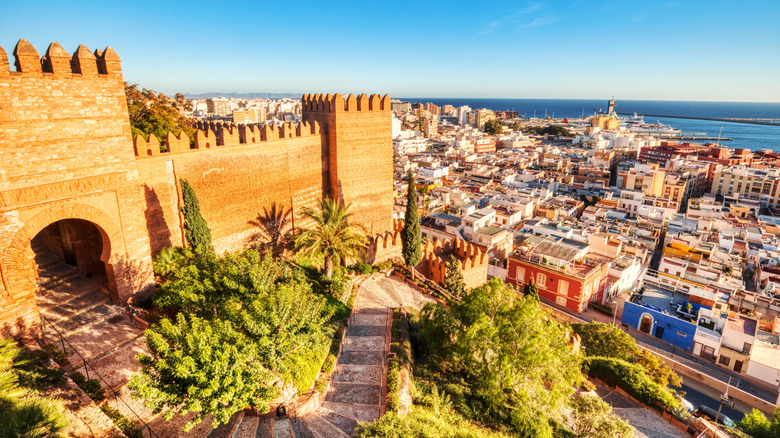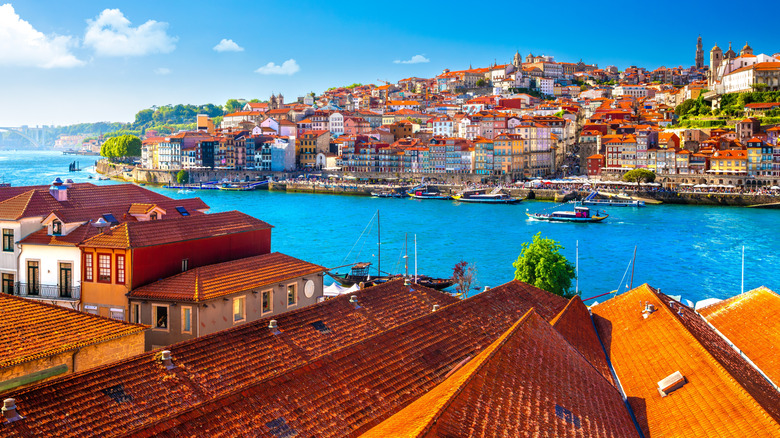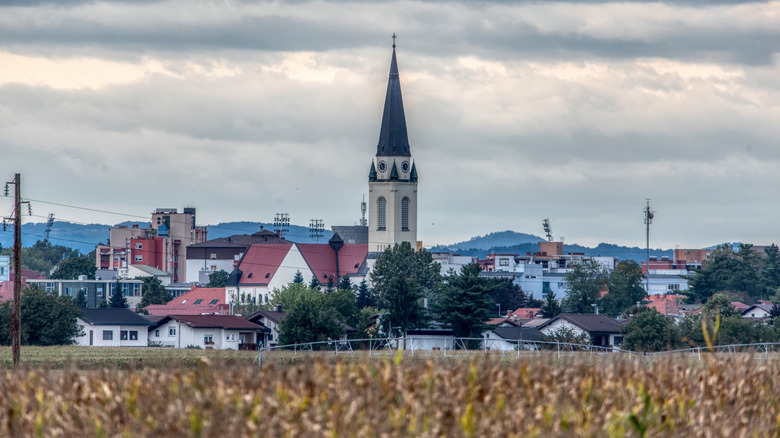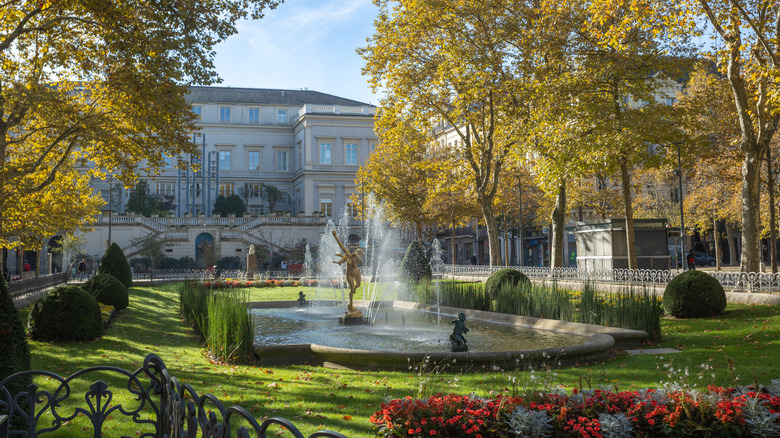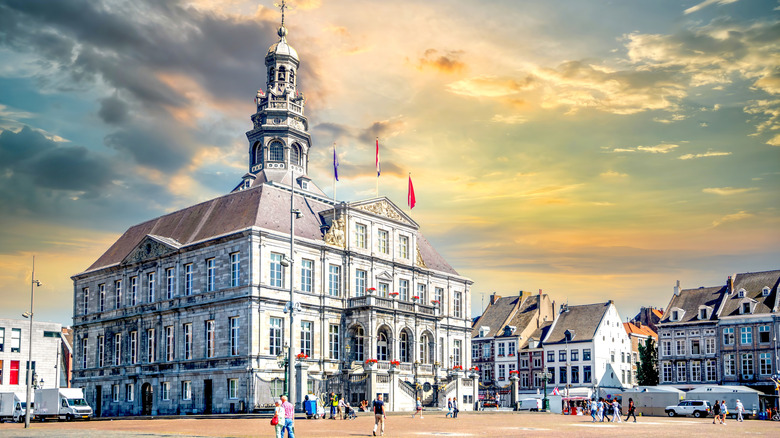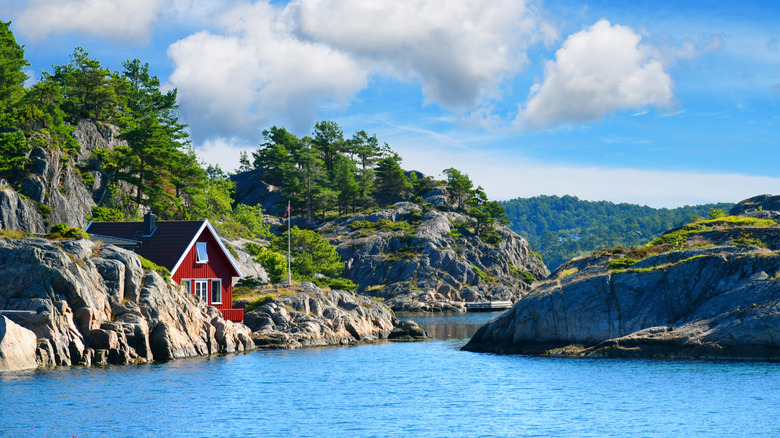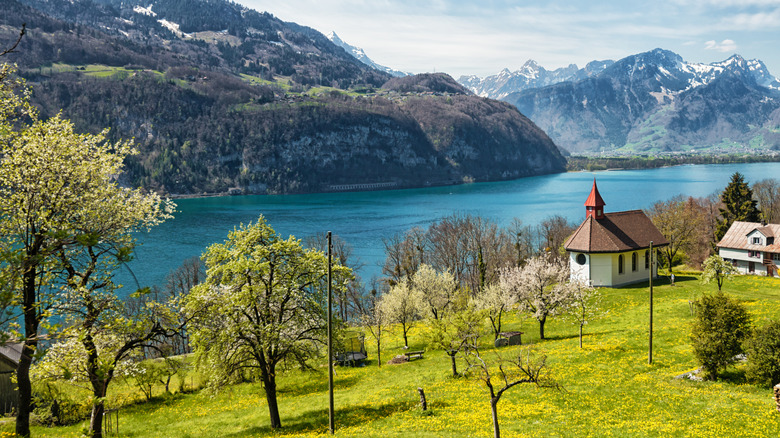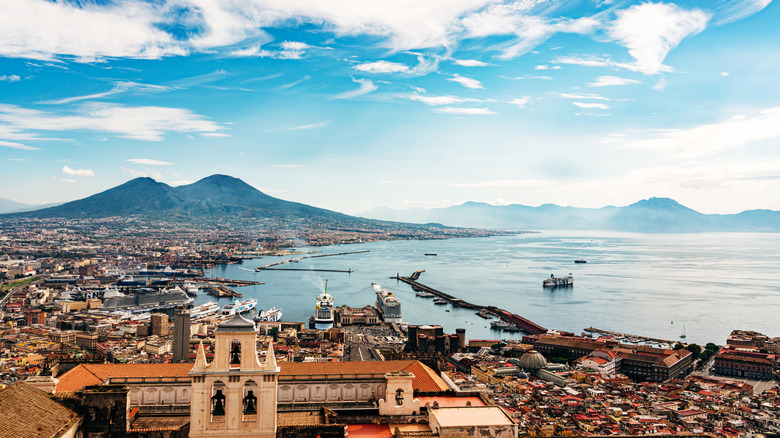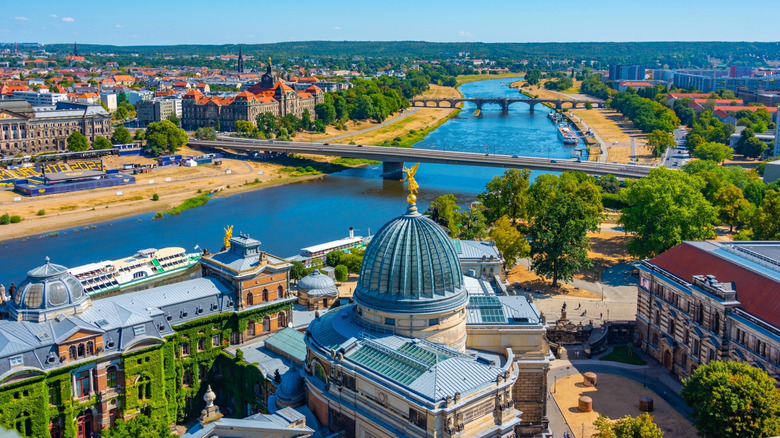The Best Cities Across Europe For A Safe And Affordable Retirement, According To A Veteran Traveler
Few decisions are as important as choosing where to retire. Sure, there are guides advising on the best U.S. states to retire to, and yes, similar advice on the best Caribbean island options out there, but what if you want to go further afield? What if you wish to spend your twilight years in Europe?
Such ambition brings added challenges. There are visa considerations, language barriers to navigate, and the cost of moving to a different country is hardly insignificant. Sunseekers may have to restrict their search to southern Europe. Those who prefer simplicity may wish to choose a country where most of the population speaks English. Those on a tight budget need to keep an eye on the financials. Gravitating towards those places where the cost of living is assumed to be low is a veritable minefield; there are often hidden costs to watch out for.
Still, those who take the time to plan their overseas retirement down to the finest detail most assuredly reap the rewards. Healthcare is more affordable in Europe, and weather preferences — if they are a genuine deal breaker — are easily tailored. In general, the cost of living in Europe really is lower than that of the U.S., and in the case of some of the less developed corners of the continent, the savings are significant. Housing costs also skew heavily in favor of American homeowners, providing more bang for your buck when selling, and the same is true for renting, with some notable exceptions. Having visited every country on this list — and with one eye on an eventual continental retirement myself — I have an excellent idea what you can expect from a move there.
Almería, Spain
Spain has long been one of the most popular destinations in Europe for expatriates. It's easy to see why. Spain enjoys more sunshine per square meter than any other European nation. It's one of the best places out there for road trips, is home to some of the world's most stunning beaches, and, as the continent's sixth largest economy, it's a land of both opportunity and promise.
Almería may not be the beating heart of Spain, but that's part of its charm.. Situated in the southeast of the country, set hard against a gulf of the same name, it's an often-overlooked destination. Over 120 miles from Málaga, the town is known for its Moorish architecture, magnificent cathedral, and oceanside views. It's a place of abundant sunshine and minimal rain, and while the summers are often blisteringly hot, cool air flowing down from the nearby Sierra de Gádor mountains keeps things manageable.
It's also a bustling port, which is part of the reason that the cost of living is so low here. On average, you'll need just $1,253 per month, including rent, to make ends meet here. Those looking to buy property also get a lot of bang for their buck: apartments clock in at just under $160 per square foot, almost less than a third of what you'd pay for a typical American property. Houses are even cheaper at only $126 per square foot. There's the usual street noise typical of Spanish cities at night, and smuggling gangs sometimes keep the police busy. Violent crime is, however, low, and petty theft is restricted to the centre of town where tourists proliferate.
Porto, Portugal
Portugal is a popular retirement destination for the same reasons as Spain. Weatherwise, it's nearly identical, although the country's north/south axis means that you'll find more variation per square mile. The two nations' histories are also closely intertwined; both benefit from a keen sense of community spirit, architecture is broadly uniform, and the pace of life is pedestrian to a fault.
Still, Portugal has several advantages over its larger neighbour. To start with, it's cheaper, as much as 30% less expensive overall. English is also more widely spoken in Portugal, and although wages are lower, such calculations matter little to most retirees. Meanwhile, healthcare is free, and the tax environment actively encourages expatriation. Portugal is also one of the safest countries in the world. Of course, choosing the right spot to retire is part of the challenge: listing all the reasons Portugal is the best place to retire to in Europe is one thing, distilling things down to a single location, quite another. Enter Porto.
A city in the northwest of the country, some 195 miles from the capital, Porto is a maze of brightly colored waterfronts, winding medieval streets, baroque churches, and senescent-friendly nightlife. It's been there since the 1st century AD, and the city's nickname, "Cidade Invicta" (The Undefeated City), stands as testament to that very longevity. Both cooler and damper than Lisbon, its standout feature is that it is significantly cheaper than the capital. Rent, food, and transport are significantly lower in Porto. House prices are a little bit higher than you'd find in the U.S, but that is in part because apartments are more common. Such places retail at around 80% of the American average.
Murska Sobota, Slovenia
There is a definite case to be made for Slovenia despite some obvious shortcomings. The climate is mild, but the mountainous terrain brings cold fronts during winter. The west of the country sees plentiful rainfall, and the country enjoys only a narrow stretch of coastline. Still, this stunning, underrated European gem has been wooing remote workers in recent years. The influx of talent has brought renewed interest in the small southern European nation. Close to one quarter of Slovenia's people are over 65, making it one of the most rapidly aging populations in Europe. Such metrics are perhaps a function of the health benefits of a Mediterranean diet, but it also means that much of the country's service industry proactively caters to retirement-age customers. Wellness spas, gentle hiking trails, and parks are abundant.
Murska Sobota, a sleepy town situated in the northeast corner of the country, lies on the banks of the Mura River, close to the Austrian border. With a population of slightly under 12,000, the town's economy is driven mostly by light industry, the service sector, and tourism. Crime is practically nonexistent, and the cost of living is low even by Slovenian standards. Indeed, Murska Sobota falls within the top 35% of the least expensive cities in the world. House prices average out at just $108 per square meter — less than half what you would pay in the U.S. Best of all, as with the rest of the country, residential visas can be converted into permanent residency after only five years spent living in the country.
Saint-Étienne, France
Millions of international tourists visit France each year. It is a center of world cuisine, a hub of historical nuance, and offers unprecedented access to the arts. It's also incredibly diverse. Hate the cold? Head towards its Mediterranean underbelly. Prefer long nights and mountain views? Make for the Swiss border. Want both? France's winter resort city on the Riviera is a sunny haven situated between sea and mountains.
With excellent healthcare, fantastic social security, and a cost of living that is at least comparable to the United States, it all comes down to a choice of where to locate. There are many options out there, and drilling down to just one is no easy feat. Still, Saint-Étienne stands out from the crowd in more ways than one. Situated in east-central France, less than 40 miles from Lyon — the gastronomic capital of France — Saint-Étienne is a city of exquisite design. The nearby Loire Gorges is perfect for an evening stroll, and the whole region is blessed with fine eateries, parks, museums, and a highly competitive cost of living.
Indeed, a retirement in Paris costs twice what you'd pay in Saint-Étienne. At just $122 per square foot, an apartment can be bought for close to a quarter of the cost of your typical American residence. House prices are also much more competitive. Food is cheaper, transport is much cheaper, and there are a number of tax benefits to explore. Throw into the mix a wealth of safe, green suburbs bristling with community spirit, and you have something close to the full package.
Wexford, Ireland
First up, the cost of living in Ireland is actually higher than it is in the U.S., around 8% on average, and in some cases — looking at you, Dublin — it's actually much higher. Still, Ireland manages to draw in retirees thanks to its many positive attributes.
English is universal, and, thanks to the Irish diaspora, many people feel genuine familial ties with the small Western European island. It's a green and pleasant land, not known for its fine weather but making up for the inclemency with community spirit, low crime, and rich cultural diversity. Best of all, if financials are of paramount importance, many parts of the country buck the trend in terms of expenses. Wexford is one such place, and while you won't find it on many lists of the best places to visit in Ireland, it is something of a hidden gem nonetheless.
You'll find the town nestled at the mouth of the River Slaney, less than 100 miles from Dublin. Much of its old city walls are still intact, and its charming medieval infrastructure is on display via the many winding lanes and culvert-lined pathways you'll encounter on a walk around the town. It's also much, much cheaper than Dublin. The cost of living for a family clocks in at under $4,000 a month compared to Dublin's figure of $6,494, making Wexford cheaper than the U.S. And since Ireland as a whole ranked second in 2024's Global Peace Index, it's also as quiet a place for retirement as you could ask for.
Maastricht, The Netherlands
Amsterdam often steals the limelight when it comes to tourism despite having the highest tourist tax in Europe. And yet, close by, lies one of Europe's most underrated and affordable cities, a place that simply bursts with multicultural charm. For my money, Maastricht is the superior place to settle down.
To start with, it's the cheaper choice. Where rent in the capital approaches $2,500, Maastricht averages at just over $1,300. Transport costs in Amsterdam are twice what you'd pay further south. Outside of the city center, houses average out at $309 per square foot, so if you are selling the family home in the U.S., bargains abound. Healthcare is also extraordinarily cheap by American standards.
Metrics aside, Maastricht is also just a fantastic place to be. Crime is very low, and it offers excellent shopping, eating, and cultural touchstones with a café culture that rivals that of Paris. It's also well situated. Close to the borders of both Germany and Belgium, you'll find yourself only a 40-minute drive from Aachen, home of one of Europe's oldest cathedrals and a personal under-the-radar favourite of mine.
Kristiansand, Norway
Norway is one of the richest countries in the world in terms of GDP per capita. On top of that, it offers social and health care programs that most other nations could only dream of. Of course, the windswept northern European country is not the cheapest place on this list; Norway is famously pricey. Nor does Kristiansand boast the lowest cost of living in the region. What it does offer, however, are additional incentives that make it more attractive to the prospective retiree.
To start with, it has mild, pleasant summers. Situated on the very southern tip of the country, some 270 miles from Bergen, its streets are lined with traditional wooden houses, white-stoned plazas, and palm trees. Yes, they have palm trees in Norway. There's no harsh winter to contend with, and perpetual nights are not a thing here either.
Norway has one of the lowest crime rates in the world, and although Kristiansand's crime rate is higher than some Norwegian towns, it's still much, much lower than international standards. Cost of living-wise, Kristiansand also manages to fly in the face of several Scandinavian tropes. Taken as a whole, Norway is only slightly cheaper than the United States. Kristiansand, however, offers significant value for retirees: A person living alone can expect to pay $1,463, including rent, as opposed to the U.S. average of $2,504.
Glarus, Switzerland
In 2024, Switzerland ranked first in the 2024 Global Retirement Index, making it an essential inclusion on this list. Still, the question remains: where exactly in the Swiss Confederation makes for an ideal retirement home? After all, the mountainous nation is filled with no small number of iconic destinations that you shouldn't skip on a trip.
Switzerland has one of the most stable economies in the world, enjoys low crime rates — despite high levels of gun ownership — and is in enviable geographic proximity to Italy, France, Austria, and Germany. It's also hellishly expensive. The average cost of living in the United States comes to $4,251 per month. In Switzerland as a whole, that figure is $6,575. Attempting to extol the virtues of this small central European nation without acknowledging the prohibitive cost of living would be a disservice. Searching for a place that enjoys all the benefits of Switzerland but is at least somewhat easier on the wallet is, of course, no easy feat. Yet not an impossible one.
Glarus lies in the east of the country, just 37 miles away from Liechtenstein, and a short drive from the stunning alpine lake of Walensee. Here, rent prices are a whopping 37% lower than you'd find in Geneva. To put that into context, rent in Glarus is almost a third cheaper than you'd find in Denver, Colorado, and mortgages can be found at historically low levels: Indeed, at the time of writing, they sit at 2.5% in Glarus versus 6.37% in Denver. The net benefit of such metrics is easily digested. Yes, Switzerland is more expensive than the U.S., but Glarus, mercifully, is not.
Naples, Italy
Naples has long held a reputation for criminality that is somewhat undeserved. Yes, there are issues with smuggling, and, in town, pickpockets are a real problem. Hollywood, however, may have over-egged the pudding; a bastion of old-world organized law-breaking it is not. The crime rate here is almost half of what you'd experience in Milan, and far less than in Rome, Florence, or Turin, which is not to say that it is crime-free. It's certainly not that either. But is it a safe place to retire to? Absolutely.
Taken as a whole, Italy is cheaper than the United States. The average cost of living across the peninsula comes to just $1,611 versus $2,504 in the U.S. Outstanding bargains are found further south — there are places where you can literally purchase a property for a single euro. However, in such places you'd miss out on any number of creature comforts and would almost certainly find yourself far away from the center of action. Naples, then, is a great compromise.
As a city, it rivals Florence in terms of art, architecture, and atmosphere. Naples has been sitting in the bay of the same name for over 2,000 years and wears its historical legacy on its sleeve with pride. Framed by Mount Vesuvius on one side and a stunning waterfront on the other, it is a city of museums, café culture, lively festivals, and enviable views. Best of all, it's cheaper than most of its neighbouring regions. An apartment here is around half the price of the U.S. average, although purchasing a house — less common in the city — works out more expensive than its U.S. counterpart. The cost of living in Naples is also slightly below the national mean, making it an ideal location for a retirement that refuses to entertain any compromises whatsoever.
Dresden, Germany
Dresden was once known as the thriving jewel box of Europe, a reference to its stunning Baroque and Rococo architecture and prominent location on the banks of the Elbe. The tragedies of war laid waste to much of the city, but it has been rebuilding at a pace ever since. Today, it is one of the most underrated cities in all of Europe.
Home to the oldest and one of the best Christmas markets across Europe, it's one of the smaller German cities, with a population of only 594,000. It's also a contender for one of the best places to retire in the world. Germany itself is an obvious choice. As the largest economy in Europe, its status as an industrial powerhouse attracts residents from across the globe. Of course, all that affluence influences the cost of living, which, by European standards, is relatively high. A family of four living in Germany needs roughly the same amount of income as a similar setup in the United States. That, combined with less desirable weather than southern Europe, means it often plays second fiddle when it comes to retirement.
Dresden, however, is a notable exception. Put simply, you cannot find anywhere in Western Europe that offers better rates for renting an apartment than in the former jewel box. Crime is also low, and that, combined with all the advantages of living in a highly industrialized nation, is what makes Dresden a truly compelling option.
Methodology
I know every country on this list really well, and I've visited all the cities and towns featured here at least once. In each case, I took the time to compare prices and crime statistics across multiple cities in each jurisdiction to compile a list that combines the very best of both worlds. also factored in rent prices, healthcare access, and overall cost of living.

